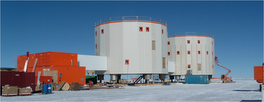Japan earthquake : an early warning failure?
The earthquake that occurred last Friday June 13th in Eastern Honshu, Japan - a M6.8 event according to the USGS, a M7.0 event according to JMA - occurred in a relatively lightly populated area, and caused few fatalities. Most of the damage seems to have been caused by landslides following the event (see Dave's landslide post).
In October 2007, Japan launched its Earthquake Early Warning system, meant to give the general population advance warning of the arrival of strong shaking. The system works by picking up the fast-arriving but non-destructive P-waves, producing an estimation of the earthquake location and magnitude, and sending out a warning to the region likely to be affected by significant shaking due to S- and surface waves.
How well did the system work for the June 13 earthquake? The following information comes from a NatureNews piece that appeared on June 16th.
The early warning system signalled a powerful quake 3.5 seconds after detecting the p-waves, but at places such as Oshu within 30 kilometres of the epicentre, the s-waves had already arrived. Residents of Kurihara, one of the cities hardest hit, received only 0.3 seconds of warning. Farther away, at a distance of 50 kilometres, the warnings were issued 5 seconds before the violent shaking; residents at 80 kilometres' distance were given 15 seconds. Those relying on television, radio and mobile-phone systems to relay the message would have had to have waited an extra second longer than those with an independent terminal that can receive the broadcast warnings directly.The NatureNews article sees the Early Warning performance as a failure, saying the "controversial" system was "beaten" by the earthquake. I would not be so negative. It will always be difficult if not impossible to give adequate warning to the area immediately surrounding the epicenter for a shallow event, as the S-waves follow the P-waves to closely for even the fastest warning system to act (and I believe 3.5 seconds from first P-wave arrival to warning is not bad at all in terms of speed). This point is indeed conceded towards the end of the piece, but by then the damage is done.
I wonder if Nature has a beef with EEW (Earthquake Early Warning)? The three news articles published on the subject since the system was launched are all negative. From a purely scientific and technical point of view, I would say the system functioned properly, within its inherent limitations. These limitations are pointed out explicitly in the documentation given to the general public. I quoted the JMA explanation of these limitations in my first EEW post. Here is a brief summary:
- Timing: because of the time required to process the seismic data and generate a warning, areas close to the focus of an earthquake may not receive the warning before the strong shaking occurs.
- False alarms: these can occur when using data from only one seismograph.
- Magnitude: magnitude estimates are notoriously inaccurate, especially before all the waves generated from the earthquake have arrived.
- Seismic intensity: intensity estimates are limited in accuracy due both to the limitations in magnitude estimation and residual uncertainties in the local amplification due to land structure.
How should one deal with the general public? What is the actual tolerance of false alarms? What is the tolerance of underestimations of damage? I do not believe there is a cut-and dried answer to any of these questions. Moreover, the answer may change with time and will probably depend on the performance history of the system. We are still in the early days of Earthquake Early Warning. Maybe a few years from now we shall have a greater handle on how to deal with these issues...




2 comments:
A lot of helpful data for myself!
I have read a few of the articles on your website now, and I really like your style of blogging. I added it to my favorites blog site list and will be checking back soon. Please check out my site as well and let me know what you think. UNR Receives Grant To Help Improve Early Earthquake Warning System
Post a Comment